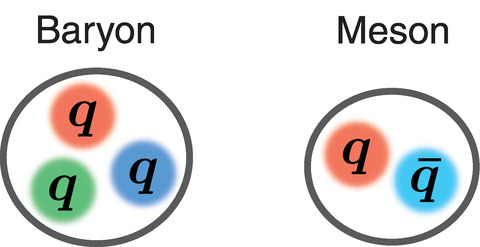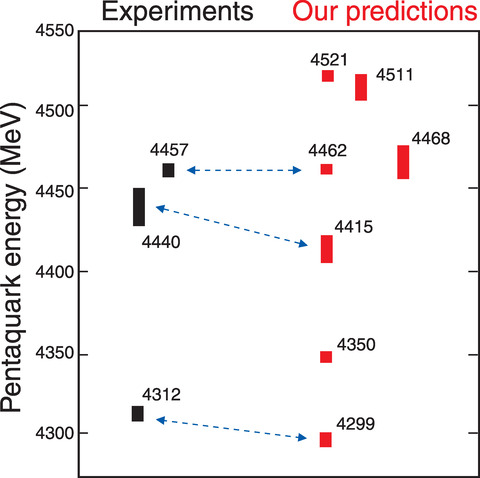
Fig.3-11 Ordinary hadrons; baryons and mesons

Fig.3-12 Possible five-quark structures: compact state and hadronic molecule

Fig.3-13 Predicted masses and lifetimes of the pentaquarks
Recently, unusually structured hadrons have been reported from accelerator experiments. Ordinary hadrons are classified into baryons and mesons; a baryon comprises three quarks, and a meson comprises a quark and an antiquark (Fig.3-11). Quarks are the elementary building blocks of hadrons, and antiquarks are the antiparticles of quarks. Researchers have discovered hundreds of hadrons have been found. For example, protons and neutrons, which form atomic nuclei, are described as baryons comprising three quarks.
Exotic hadrons, which cannot be explained by the ordinary meson or baryon structure, have been reported recently. Of note is the hadron "Pc" discovered during an experiment at the Large Hadron Collider in Europe, where Pc denotes a pentaquark, i.e., a hadron comprising five quarks. A pentaquark was first reported by SPring-8 in Hyogo, Japan as Θ+, but its existence was not confirmed. Thus, the observed Pc may represent the first discovered pentaquark.
However, it is not yet understood how the five quarks of Pc form their hadron structure. Therefore, this work aimed to develop a model to theoretically describe the Pc's structure and understand its nature by comparing model predictions with the experimental results.
Two models have been proposed by previous researchers: a compact pentaquark (c5q) state in which five quarks form a densely bound state and a hadron molecule in which five quarks are divided into baryon and meson clusters that are loosely bound, similarly as in a molecule (Fig.3-12). However, the c5q state can split into two hadrons of which one is a hadron molecule, thus implying that the two states can mix. Therefore, we have proposed a hybrid model that considers a mixture of the c5q states and hadron molecules. The π exchange force, known to produce attraction binding atomic nuclei, was also introduced in the hadronic molecules.
The energy of the pentaquarks was then predicted using the proposed hybrid model introducing state mixtures (Fig.3-13). The dashed arrows in Fig.3-13 show that the model accurately reproduced the observed mass and lifetime of Pc hadrons. These results indicate that Pc is indeed an exotic state that comprises a mixture of the c5q state and hadron molecule. In addition to these three Pc states, we predict that more pentaquarks are yet to be discovered; future efforts will aim to explore such options and further verify the developed model by analyzing such pentaquarks. Future endeavors will also aim to further understand the Pc structure and continue progressing toward the fundamental problem of how matter of the universe is created from quarks with dynamical processes, such as spontaneous chiral symmetry breaking and confinement.
(Yasuhiro Yamaguchi)
<Previous: 3-5 | Next: 4 Nuclear Science and Engineering Research>